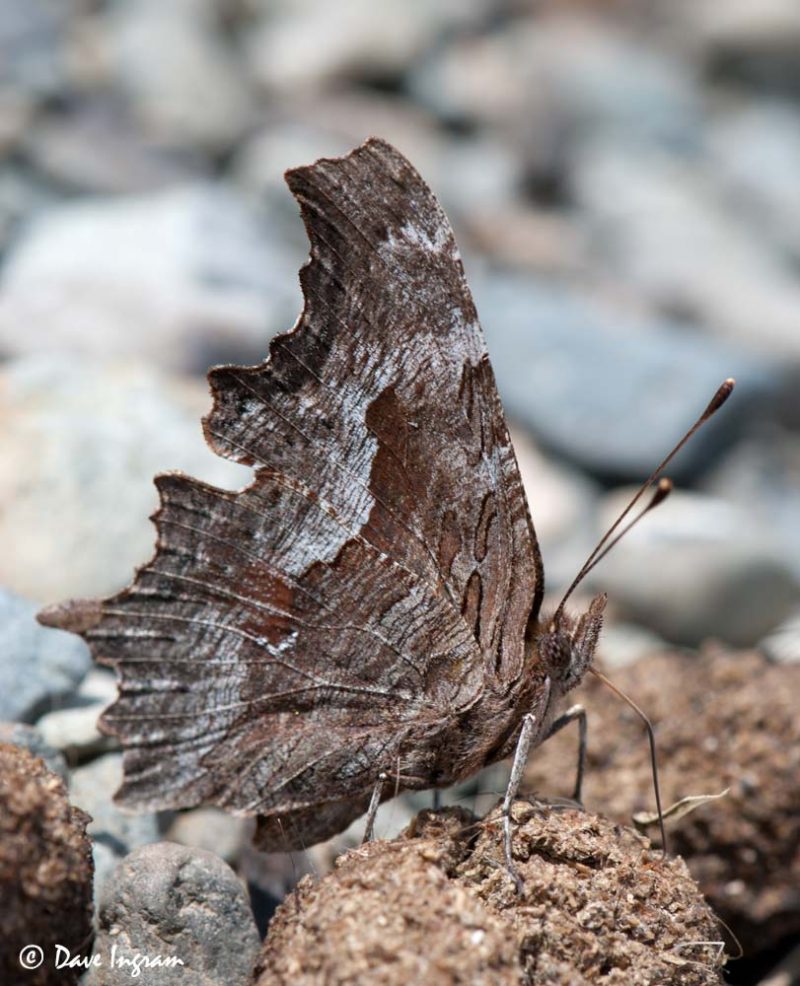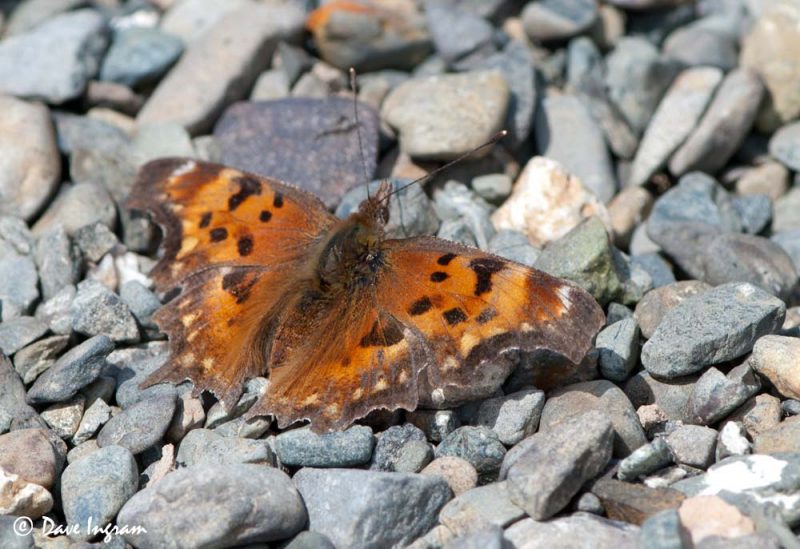Finding dog excrement on a trail or a beach always disgusts me, especially in a provincial or national park. I have to wonder where the owner was or what he or she was thinking. I’ve heard the “organic” argument on many occasions, and true enough it is organic and does break down over time. However, what often isn’t factored into the equation is volume. Think about how often you find wild animal scat and then think about how often you see the dog droppings. The difference in smell is a whole other kettle of fish but that’s perhaps better left for a future post.
So my initial reaction when seeing what I thought was dog poop on the beach at Karst Creek in Strathcona Provincial Park was “Here we go again…”

Then I noticed the anglewing butterflies that were landing on the poop and feeding on it, or at least the minerals and organic material that they need to reproduce. A closer look at the poop made me think that it wasn’t dog but perhaps wolf or cougar because of the amount of hair in it. This was definitely more interesting.

Anglewings are notoriously hard to observe closely. They’re definitely wary of people and although I had seen several already during the day none stayed still long enough to photograph.
Fortunately these were very focused on their business and I was able to get quite close to them by lying down on the gravel of the beach (after first checking to see if there was any more poop around). They’d land on the poop, feed for a bit, fly off and return.
I was even able to shoot a quick video of the butterflies in action as well …
According to the excellent book Butterflies of British Columbia, by Cripsin S. Guppy and Jon H. Shepard these butterflies were likely overwintering Zephyr Anglewings (Polygonia zephyrus). They have a bit of a worn look to them when they emerge in the spring, mate, and lay eggs which will become the summer generation adults in July and August.
It was great to spend some time with the kids watching these beautiful butterflies, even if they were sitting on rather dried up old poop. And please, don’t add “Well butterflies need dog poop too” to your arsenal of well honed arguments for leaving your dog’s business beside the trail.
For more information about butterflies in BC consult the excellent book Butterflies of British Columbia, by Cripsin S. Guppy and Jon H. Shepard. You might also want to check out my post Puddling in Paradise which has more information about these butterflies and their natural history.